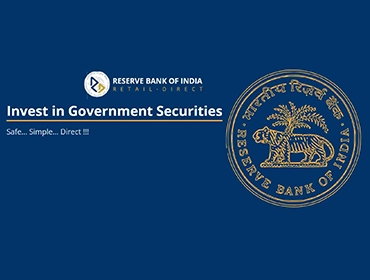About
Managing the government's banking transactions is a key RBI role. Like individuals, businesses and banks, governments need a banker to carry out their financial transactions in an efficient and effective manner, including the raising of resources from the public.
Since its inception, the Reserve Bank of India has undertaken the traditional central banking function of managing the government’s banking transactions. The Reserve Bank of India Act, 1934 requires the Central Government to entrust the Reserve Bank with all its money, remittance, exchange and banking transactions in India and the management of its public debt. The Government also deposits its cash balances with the Reserve Bank. The Reserve Bank may also, by agreement, act as the banker and debt manager to State Governments. Currently, the Reserve Bank acts as banker to all the State Governments in India (including Union Territories of Puducherry and Jammu and Kashmir), except Sikkim. For Sikkim, it has limited agreement for management of its public debt.
The Reserve Bank has well defined obligations and provides several banking services to the governments. As a banker to the Government, the Reserve Bank receives and pays money on behalf of the various Government departments. The Reserve Bank also undertakes to float loans and manage them on behalf of the Governments. It provides Ways and Means Advances – a short-term interest bearing advance – to the Governments, to meet temporary mismatches in their receipts and payments. Besides, like a portfolio manager, it also arranges for investment of surplus cash balances of the Governments. The Reserve Bank acts as an adviser to the Government, whenever called upon to do so, on monetary and banking related matters. The Central Government and State Governments may make rules for the receipt, custody and disbursement of money from the consolidated fund, contingency fund, and public account. These rules are legally binding on the Reserve Bank as accounts for these funds are with the Reserve Bank.
The banking functions for the governments are carried out by the Public Accounts Departments at the offices/branches of the Reserve Bank. As it has offices and sub-offices in 29 locations, the Reserve Bank appoints other banks to act as its agents for undertaking the banking business on behalf of the governments. The Reserve Bank pays agency bank charges to the banks for undertaking the government business on its behalf. The management of public debt, including floatation of new loans, is undertaken by the Internal Debt Management Department at the Central Office and Public Debt Office at offices/branches of the Reserve Bank. Final compilation of Government accounts, of the Centre and the States, is done at Nagpur office of the Reserve Bank which has a Central Accounts Section.


















